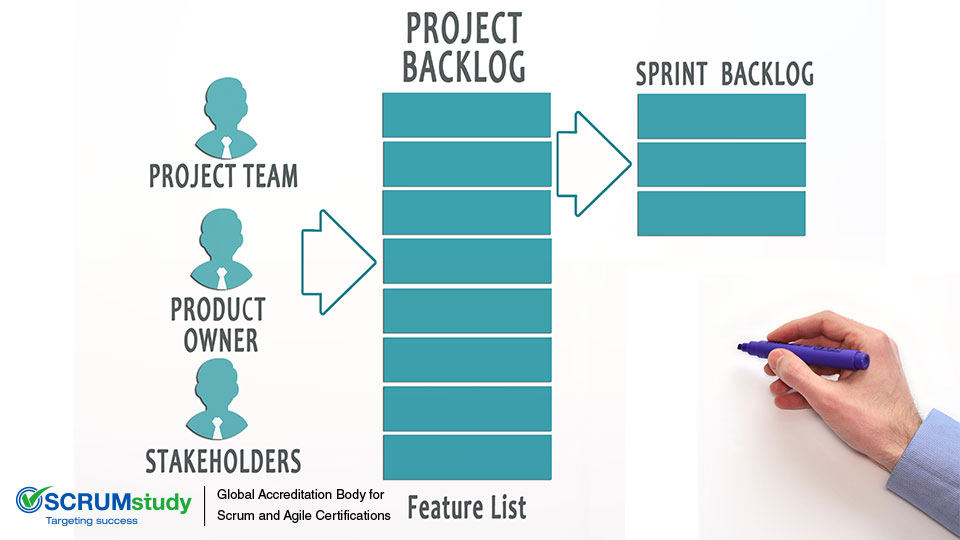Agile Scrum product backlog refinement
Posted bySCRUMstudy® on July 10, 2024
Categories Agile Product Backlog Product Development Scrum Sprint
Product backlog refinement in Scrum involves several key steps to ensure clarity and prioritization. Initially, the product owner collaborates with the team to review and adjust backlog items, ensuring they are clear, concise, and aligned with the product vision. Next, they prioritize items based on value and dependencies, refining estimates and acceptance criteria as needed. Throughout this iterative process, stakeholders provide input to enhance understanding and feasibility. The goal is to maintain a dynamic backlog that reflects current priorities and evolves with feedback, fostering a shared understanding among all team members for efficient sprint planning and delivery.
What is a Sprint Backlog? Is it a baseline, a record or a report? Baseline is a project document, which, defines aspects of the project and, once approved, is subject to change control. It is used to measure a project’s actual performance as against planned targets. A record maintains information on the progress of the project. A report provides snapshots of the status of different aspects of a project at any given point of time or for a given duration.
To answer this question, we need to understand what a Sprint Backlog is, its purpose and composition. The Scrum Team creates the Sprint Backlog and Sprint Burndown Chart using the User Stories, and the Updated Task List during Sprint Planning Meeting. During Sprint Planning Meeting, the User Stories, which are approved, estimated, and committed during the Create, Estimate, and Commit User Stories process, are taken up for discussion by the Scrum Team. Each Scrum Team member also uses Updated Task List to select the tasks they plan to work on in the Sprint, based on their skills, and experience. The list of the tasks to be executed by the Scrum Team in the upcoming Sprint is called the Sprint Backlog.
It is common practice in Scrum that the Sprint Backlog is represented on a Scrumboard or task board, which provides a constantly visible depiction of the status of the User Stories in the backlog. Also included in the Sprint Backlog are any risks associated with the various tasks. Any mitigating activities to address the identified risks would also be included as tasks in the Sprint Backlog. Once the Sprint Backlog is finalized and committed to by the Scrum Team, new user stories should not be added – however, tasks that might have been missed or overlooked from the committed user stories may need to be added. If new requirements arise during a Sprint, they will be added to the overall Prioritized Product Backlog and included in a future Sprint, depending on their criticality, and urgency.
Another tool associated with the Sprint Backlog is the Sprint Burndown Chart. It is a graph that depicts the amount of work remaining in the ongoing Sprint. The initial Sprint Burndown Chart is accompanied by a planned burndown. The Sprint Burndown Chart should be updated at the end of each day as work is completed. This chart shows the progress that has been made by the Scrum Team and also allows for the detection of estimates that may have been incorrect. If the Sprint Burndown Chart shows that the Scrum Team is not on track to finish the tasks in the Sprint on time, the Scrum Master should identify any obstacles or impediments to successful completion, and try to remove them. A related chart is a Sprint Burnup Chart. Unlike the Sprint Burndown Chart which shows the amount of work remaining, the Sprint Burnup Chart depicts the work completed as part of the Sprint.
So, it is difficult to categorize the Sprint Backlog as a baseline, record or a report. And as Scrum professes minimum documentation, Sprint Backlog fulfills purposes of more than one project document. For more information on Scrum framework, you can read the Scrum Body of Knowledge (SBOK Guide). It can be downloaded for free in SCRUMstudy website: http://www.scrumstudy.com/download-free-buy-SBOK.asp

